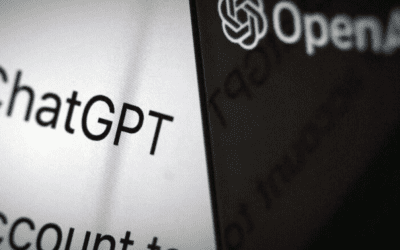There’s been a hot debate in some marketing circles about Google PPC Ads, with some people arguing that they no longer work (or at least not for certain types of businesses), and others arguing that they do still work if you know how to use them properly.
But, rather than wade into the debate, we’d like to talk about why we think employee-generated content (employee advocacy) might be a better investment.
Some Common Themes
If you’ve read any of our past articles, you’ll know we write a lot about how consumers (i.e., people) trust real people (i.e., employees, and other customers, and sometimes influencers) more than they trust large corporations.
We’ve also written about how audiences implicitly trust organic content better than traditional advertisements.
Both of these concepts play into making employee-created content a potentially better marketing tool than Google ads.
Think about Your Own Life
If you’re reading this, you’re probably an experienced digital consumer yourself. You’re savvy about internet browsing and you know how to find the content you like best.
Do you think popup ads are working on you?
Even before the internet, most Americans were fairly good at tuning out interruptive ads. When the game paused and the commercials came on, most people muted the TV and got up to use the bathroom or get a beer. We’ve continued to apply this mindset to our digital consumption.
Seriously, ask yourself: when was the last time you actually clicked on a Google ad on your smartphone or laptop?
Most people either use ad-blockers, or they learn how to ignore ads. Even when we don’t successfully tune them out, we avoid clicking on them. That wouldn’t be a problem if consumers went out and bought the advertised items on their own after viewing the ads, but that usually only happens if it’s an item they’re already looking for.
Meaning it’s really only cost-effective for the largest brands to invest in blanketing the internet with ads.
Does that mean it might not be worth it for everyone else? We’ll come back to that.
Bots?
What about bots and crawlers clicking on your ads? What about ad-fraud?
If you spend money on PPC ads, you pay for every click. But if a bot clicks on your ad, there’s zero chance of a sale. Web crawlers don’t convert.
Now, many will clamor that ad-fraud can be mitigated. You don’t have to lose all your money on “fake” clicks. That’s true, but mitigating them can be a bit of a pain – time intensive and costly, a real headache if you don’t know what you’re doing.
So once again, we return to the question: is it worth it?
Perhaps it is. Certainly, some savvy advertisers can make a lot of money off of Google ads. And if you have a 9-figure marketing budget, you can definitely gather some impressive data from massive ad campaigns, meaning you can target them very effectively.
But if you’re a small business, or if your team isn’t already expert at Google advertising, it may not give you a good return on your investment.
Which Brings Us to Employee Advocacy
Whereas Google ads may not be cost effective for every company, businesses of every size can see immediate returns from farming out their content marketing and social media to their own employees.
This is what we call “employee advocacy” or “crowdsourced content marketing.” If you have a workforce of any size, you’ve got a wealth of social media talent and good content at your disposal. Best of all, you don’t have to pay extra for this content (other than rewards for top performers, perhaps).
Employee-generated content is more “authentic” than are Google ads. Content that’s employee-created is more organic and therefore more trusted by audiences. Employee advocacy, or employee ambassadorship, is real people talking to real people.
Which means we think it will convert at much higher rates than any but the most targeted Google ads. People are less likely to tune out employee-generated content than they are Google ads.
In short, we think it will cost you less and perform better in the long run. Making it at least worth a shot. Especially if you’ve been frustrated up to now with the performance of your Google ads.



